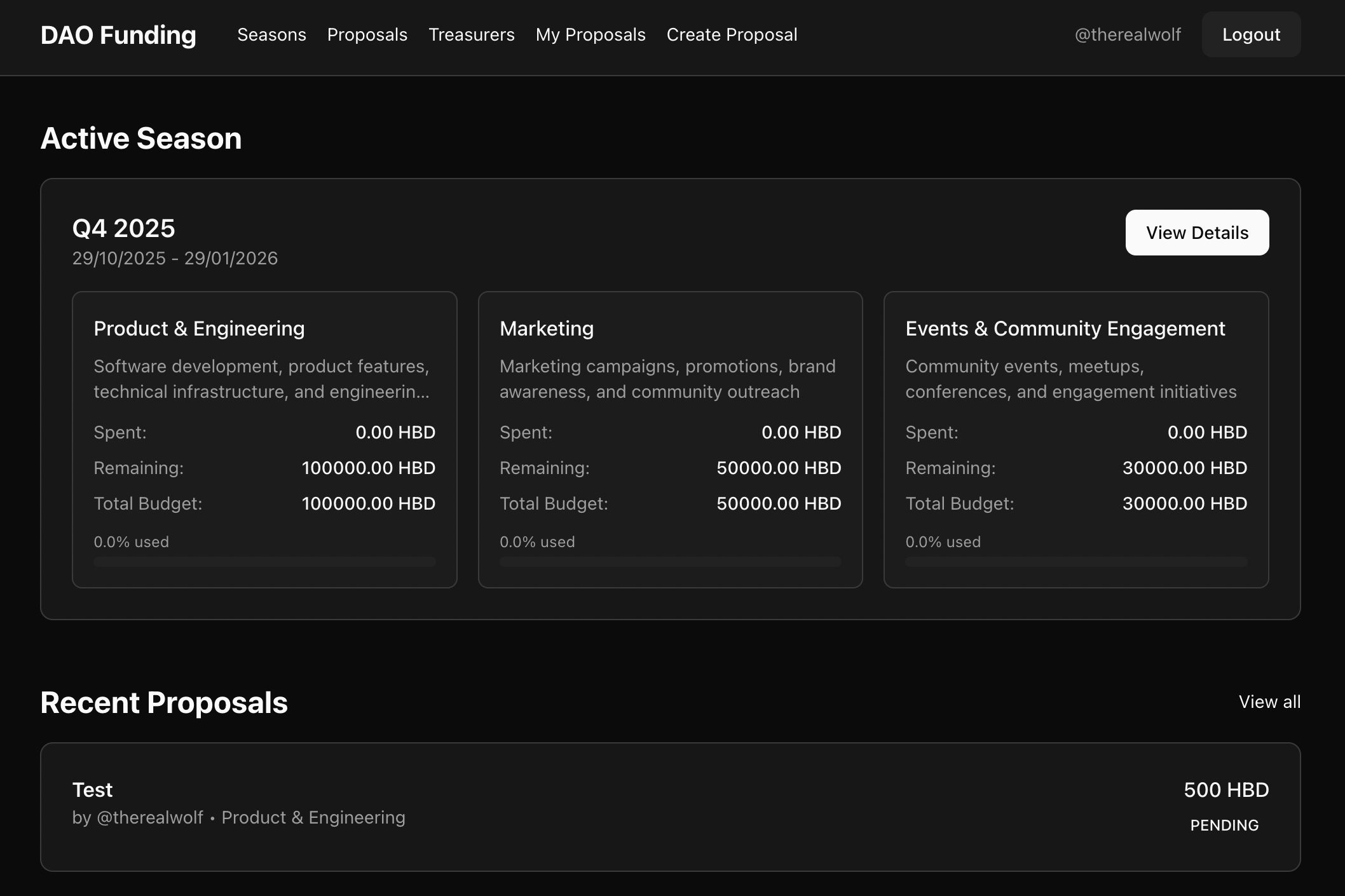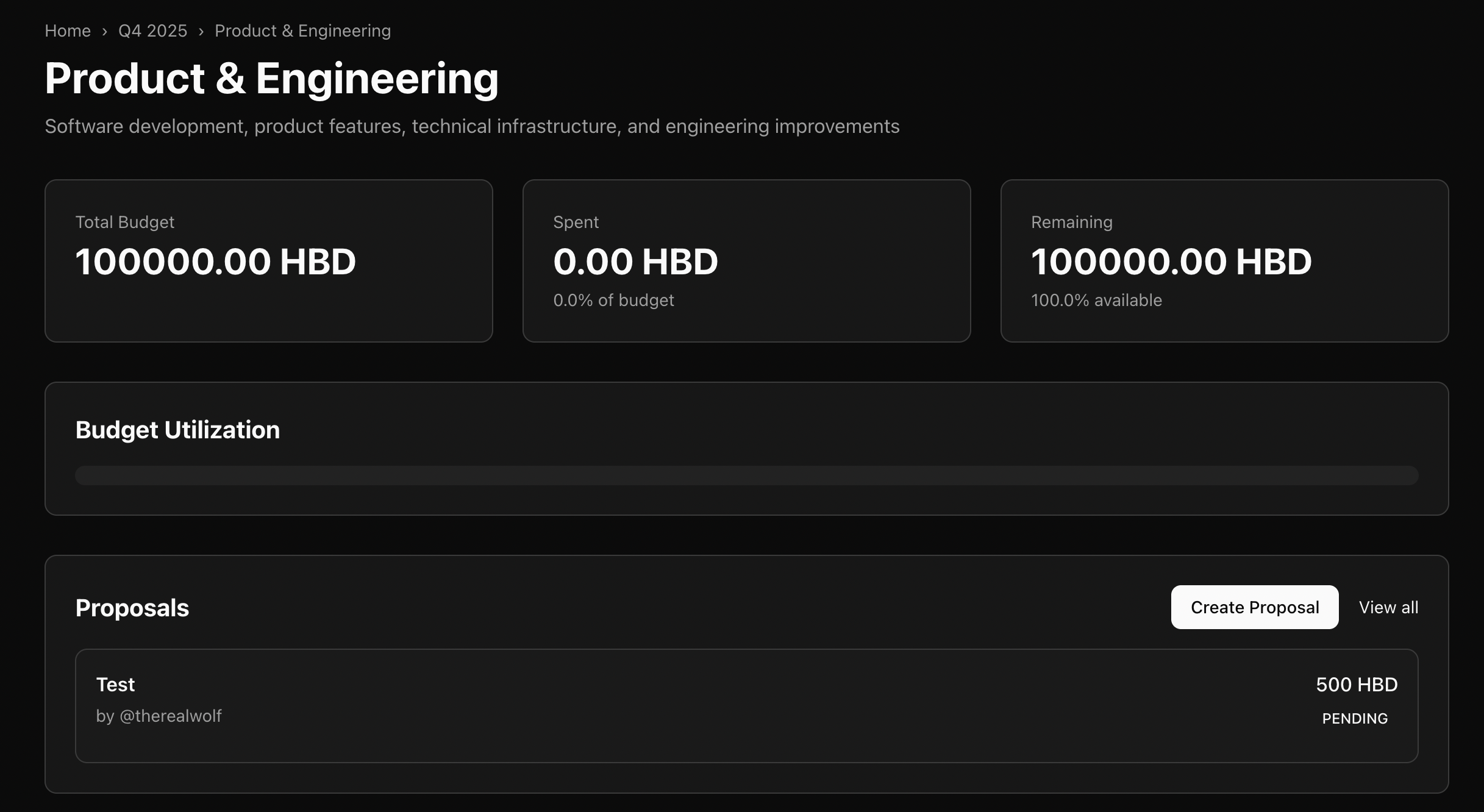Hivers,
for a while now, I’ve been thinking about how we can make better financial decisions as a blockchain and community. The issues around DHF spending aren’t new. Many, including myself, have often been vocal about it. Personally, I’ve been voicing my opinion year after year in our developer chat on Mattermost - hoping something would change or that my concerns were wrong. But my time for talking and standing on the sidelines is now over - I want to get practical and help Hive take action.
We Need to Spend Smart, Not Reckless
It should be clear to everyone that Hive, as a blockchain and community project, needs to invest into certain areas to grow. Product and engineering, marketing, business development, events, partnerships — all of these are critical for Hive to reach its potential.
Spending money isn’t bad, but reckless, inefficient, or opaque spending is.
One of the biggest concerns from stakeholders and community members has been around the ValuePlan. Since its creation in 2022, it has spent over $3.8 million, which is roughly $1 million per year.

(Source)
While this spending was approved by stakeholders, the how and why behind it often remained unclear and opaque. How much was spent on the rally car? $200k? $400k? $800k? I’m not here to throw shade — but in any traditional organization, if outcomes don’t align with expectations, accountability follows.
We can’t enforce accountability retrospective, but we can build better systems that make accountability automatic.
A Better Way Forward
I believe we can do better — not just by talking about it, but by designing something that actually works for Hive and stays true to what makes this chain different.
That’s why I’m proposing a new, structured system that builds on our current DHF foundation while addressing its weaknesses. It also aligns with many ideas raised during the recent HiveForum discussion.
This would not create more bureaucracy or prevent people from creating raw proposals for the DHF. Neither is it about rewriting the DHF or starting from zero. But rather to bring structure, transparency, and measurable results to the DHF.
1. Experienced & Skilled Reviewers
Whether it’s about engineering, marketing, business development, or community, requests should be reviewed by people who actually know the field.
No serious organization would let someone with no relevant experience make key funding decisions. Hive shouldn’t either.
Reviewers should be votable by stakeholders, and revokable based on performance.
This keeps it decentralized while maintaining standards.
2. Transparency as Default
All requests, approvals, and payments should be recorded transparently and verifiably.
Receipts should be public and verifiable where possible even with sensitive data removed.
If the majority of stakeholders disagree with a funding decision, there should be a way to challenge it. That way, the community has direct control over funding in case they disagree with reviewers.
By following these principles, we can build a trustless 2nd-layer proposal system — fast enough to execute, yet decentralized enough to stay true to Hive’s core values.
Implementation Concept
To visualise how such a 2nd-layer DAO platform could work, I’ve built a small demo application.

Buckets
Each funding “bucket” has its own seasonal budget cap and proposal process.
At least three reviewers are selected by stakeholders each season. For example, the top 3 are chosen. Optionally, if they are not fulfilling their roles, they could be rotated out mid-season.
Example buckets:
- Product & Engineering
- Business Development & Partnerships
- Marketing
- Events & Community Engagement
- (Optional) Research & Strategy
- (Optional) Operations

Treasurers
Each bucket’s funds are managed by multisig treasurers, ideally a group of 10–20 trusted accounts (e.g. witnesses) with a 51% threshold. Their job is simple: confirm payments weekly that reviewers have already approved.
After HF26, this should be easily manageable with 24-hour expiry on transactions. Multisig would need to be updated periodically.

Proposal Requests
Every proposal must specify its bucket and include the same kind of details we use in DHF proposals today.
Payments can be total or daily, but capped at a reasonable amount (e.g. $20k). Each proposal request would need to be approved by 2/3rd or 3/3rd of the reviewers - based on the funding amount.

Where We Go From Here
We have a strong community with incredible talent. We also have the luxury of a funding system that community members can use to bring our blockchain and ecosystem forward. But that also means we have a responsibility to manage it wisely.
It’s clear that Hive’s spending structure needs to evolve. We can’t keep doing the same thing and expecting better results and that's why I've written this post. Which is not a funding proposal but a call to improve the system first.
That said, building out the 2nd-layer DAO platform would require some resources. When the concept is fleshed out and has community backing, I'll prepare a transparent implementation proposal that includes clear deliverables, budget and timelines.
What You Can Do
For now:
- Read and discuss this concept.
- Share feedback and help refine the concept.
- If you think Hive needs a more accountable spending process, say so.
The more support this idea gets early, the smoother implementation can be later.
We’ve built Hive by proving we can stand up, fork away and built something of our own based on morale and ethics - even when the odds were against us. Not everything went smoothly and we lost quite a lot of people along the road. But,still, we followed our core principles.
Let's use our hive mind to make strategic decisions as a community.
I'll be at the Hive Townhall about "DHF spending and Hive strategy development" today at 8AM PST in the Hive discord, hosted by @vaultec, where I'll be happy to discuss this concept and answer any questions that may come up.
Wolf